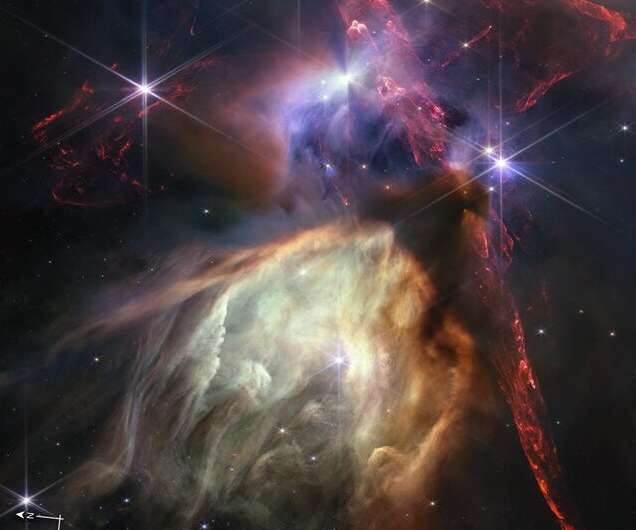Astronomer Nienke van der Marel has unveiled stunning images captured by the James Webb Space Telescope, showcasing the dynamic process of star formation. Van der Marel's study focuses on a star-forming region estimated to be a few million years old, where planets are emerging around massive stars.
The images, distinguished by vibrant hues, reveal intricate details of the star-forming process. Filters utilized by the telescope unveil the presence of hot hydrogen in striking red hues, illustrating the energetic outbursts that propel gas outward, forming characteristic red jets.
One particularly striking image showcases a massive star enveloped in a cloud of pink, brown, and purple dust, expelled from its surface. Van der Marel highlights the significance of these images in understanding the enrichment of dust grains and heavier elements by massive stars, essential for the formation of planets and, potentially, life.
These images offer a rare glimpse into the brief yet spectacular life cycle of massive stars, which culminates in explosive supernova events. With just 500 Wolf-Rayet stars observed in the Milky Way, each image captured by the James Webb Space Telescope holds invaluable insights into the cosmic phenomena shaping our universe.








